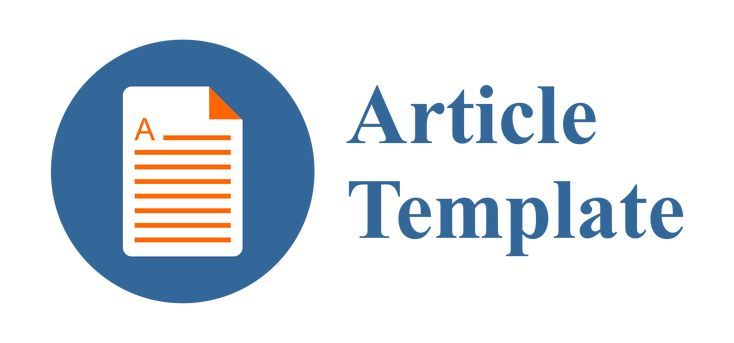Pengejawantahan Pendekatan Storytelling dalam Pemahaman Membangun Diagram Alir Data
DOI:
https://doi.org/10.29408/edumatic.v5i2.4060Keywords:
DFD, Sentence Pattern, StorytellingAbstract
Throughout the System Development Life Cycle (SDLC), establishment the software through various phases. System design is one of the most crucial aspects of the SDLC. The Data Flow Diagram (DFD) is a model to build the system. The purpose of the research was to make it easier for people to comprehend the diagram by carefully preparing DFD, then it created software according to the DFD design. Storytelling is the method employed, and it pertains to qualitative ways for creating language patterns. As a design reference, it needs to make the DFD pattern subsequently. The research mimics two scenarios to reflect previous research on the same principle. According to the findings of this study, there are two significant disparities. The first scenario concerns system user activity, whereas the second concerns software performance. Therefore, it corresponds to the core notion of input-process-output; narrative scenario 1 is more consistent and easier to design in the processed results created from sentence patterns to DFD patterns. Scenario 2, on the other hand, connects many process symbols to processes, complicating the DFD design. Finally, scenario 2 is beneficial for requirements elicitation, whereas scenario 1 applies to business procedures.
References
Afuan, L., Nofiyati, N., & Umayah, N. (2021). Rancang Bangun Sistem Informasi Bank Sampah di Desa Paguyangan. Edumatic: Jurnal Pendidikan Informatika, 5(1), 21–30.
Aleryani, A. Y. (2016). Comparative Study between Data Flow Diagram and Use Case Diagram. International Journal of Scientific and Research Publications, 6(3), 124–127.
Ambarsari, E. W., & Herlinda, H. (2020). Pythagoras Tree Applied For Determined Instagram Usage Habit Decision. SinkrOn, 4(2), 56–61. https://doi.org/10.33395/sinkron.v4i2.10517
Gürsoy, G. (2021). Digital storytelling: Developing 21st century skills in science education. European Journal of Educational Research, 10(1), 97–113. https://doi.org/10.12973/EU-JER.10.1.97
Hathaway, T., & Hathaway, A. (2015). Data Flow Diagramming by Example: Process Modeling Techniques for Requirements Elicitation. BA-Experts.
Hidayat, D. B., Muktadir, A. M., & Dharmayana, I. W. (2019). Efektivitas Metode Mendongeng (Storytelling) dalam Meningkatkan Keterampilan Berbicara dan Keterampilan Membaca Siswa (Sebuah Studi Kasus di SDN 55 Bengkulu Selatan). Jurnal Pembelajaran Dan Pengajaran Pendidikan Dasar, 2(2), 120–128. https://doi.org/10.33369/dikdas.v2i2.10582
Kim, Y., & Hartanto, A. (2020). Storytelling in clothing design: A study of fashion brand “SEAM” in Indonesia. International Journal of Scientific and Technology Research, 9(1), 914–919.
Knaflic, C. N. (2015). Storytelling with Data: A Data Visualization Guide for Business Professionals. John Wiley & Sons, Inc.
Kusuma, T. M. J. (2007). Pengantar (Metode) Penelitian Bahasa. Yogyakarta: Balai Pustaka.
Lundqvist, A., Liljander, V., Gummerus, J., & van Riel, A. (2013). The impact of storytelling on the consumer brand experience: The case of a firm-originated story. Journal of Brand Management, 20(4), 283–297. https://doi.org/10.1057/bm.2012.15
Matei, S. A., & Hunter, L. (2021). Data storytelling is not storytelling with data: A framework for storytelling in science communication and data journalism. Information Society, 37(5), 312–322. https://doi.org/10.1080/01972243.2021.1951415
Moeliono, A. M., Lapoliwa, H., Alwi, H., Wisnu Sasangka, S. S. T., & Sugiyono. (2017). Tata Bahasa Baku Bahasa Indonesia (fourth). Badan Pengembangan dan Pembinaan Bahasa. Kementerian Pendidikan dan Kebudayaan.
Muntohar, A. (2020). Sistem Informasi Data Klien Berbasis Java Pada Kantor Notaris dan PPAT Arif. Edumatic: Jurnal Pendidikan Informatika, 4(2), 58–67. https://doi.org/10.29408/edumatic.v4i2.2515
Pratiwi, R. (2016). Penerapan Metode Storytelling Untuk Meningkatkan Keterampilan Berbicara Siswa Kelas II SDN S4 Bandung. Jurnal Pendidikan Guru Sekolah Dasar, 1(1), 199–207. https://doi.org/10.17509/jpgsd.v1i1.9074
Reforma, N., Basir, R. R., & Theodora, B. D. (2021). Rancang Bangun Aplikasi Akademik Berbasis Java pada SMK Prestasi Prima. Jurnal Riset Dan Aplikasi Mahasiswa Informatika (JRAMI), 2(03), 551–558. https://doi.org/10.30998/jrami.v2i03.1534
Rohimah, I., & Kustian, N. (2021). Sistem Informasi Pengelolaan Keluhan Pelanggan pada Toko Kain Flanel Jakarta Timur. Jurnal Riset Dan Aplikasi Mahasiswa Informatika (JRAMI), 2(03), 536–543. https://doi.org/10.30998/jrami.v2i03.1220
Sakti, R. H., Sukardi, S., Giatman, M., Nazar, E., Wakhinuddin, W., & Waskito, W. (2020). Flipped Classroom-Computer Based Instruction untuk Pembelajaran Pada Revolusi Industri 4.0: Rancang Bangun dan Analisis Kebutuhan. Edumatic: Jurnal Pendidikan Informatika, 4(1), 63–72.
Satriani, I. (2019). Storytelling in Teaching Literacy: Benefits and Challenges. English Review: Journal of English Education, 8(1), 113–120. https://doi.org/10.25134/erjee.v8i1.1924
Septianingtias, V. (2015). Pola kalimat pada kumpulan dongeng gadis korek api karya H.C. Andersen (suatu kajian sintaksis). Jurnal Pesona, 1(1), 42–49.
Soufitri, F. (2019). Perancangan Data Flow Diagram Untuk Sistem Informasi Sekolah (Studi Kasus Pada Smp Plus Terpadu). Ready Star, 2(1), 240–246.
Wibowo, G. I., Rumagit, A. M., & Tuturoong, N. J. (2014). Perancangan Aplikasi Gudang Pada Pt. Pakan Ternak Sejati. Jurnal Teknik Elektro Dan Komputer, 3(4), 11–18.
Downloads
Published
How to Cite
Issue
Section
License
All articles in this journal are the sole responsibility of the authors. Edumatic: Jurnal Pendidikan Informatika can be accessed free of charge, in accordance with the Creative Commons license used.

This work is licensed under a Lisensi a Creative Commons Attribution-ShareAlike 4.0 International License.




